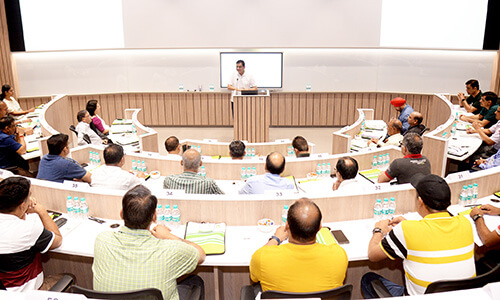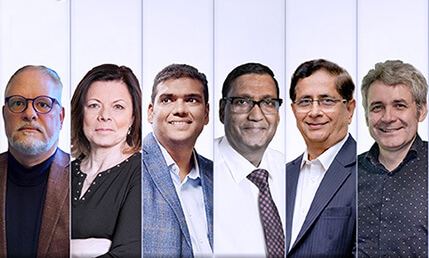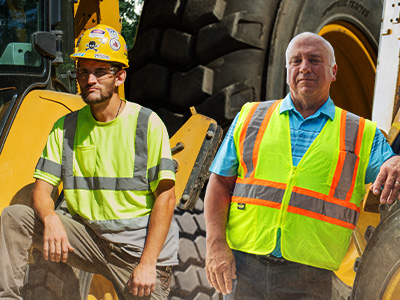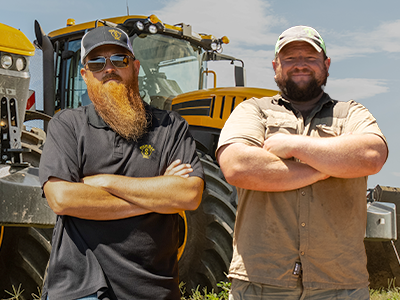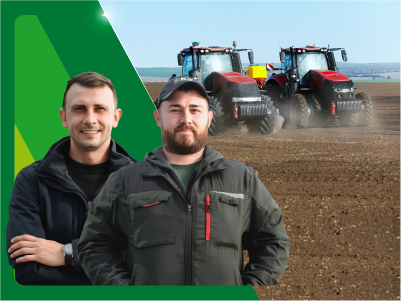Paul has spent 20 years working in the development of off-highway power trains, he is the leader of the development of future power systems across electrification and low carbon intensity fuels.
Paul, come and join me.
Hi Paul, welcome to Global Trends.
Thanks Saana, it’s nice to be here.
Thank you for joining us. But, before starting our interview, I would like to invite you all to follow us on our social media channels, share your reactions and opinions and enjoy the episode with us!
Now Paul, Perkins is well known as a diesel expert – so what’s your story when it comes to Alternative Energies?
Thanks, Saana. You know, we’re best described as power systems experts. We see ourselves as part of the energy transition, and we are playing an important role in supporting our customers helping them navigate through a wide range of different technologies, trying to improve their efficiency, but also reduce their environmental impact. And one of the ways we’re doing that is by offering electric solutions.
Fantastic!
Yeah, it is something we’ve been doing for 25, 30 years, in terms of creating more efficient engines that reduce NOx and particulates, and now the focus is on reducing the greenhouse gas emissions as well.
Ok! Well, in playing a role in this energy transition, electrification is a major opportunity, of course. So, have you got some news for us with regards to that?
Yes, we have a new electric battery solution; it’s the first step – we have got a 300V and 600V modular system, where you can combine together multiple packs, to help some OEMs powers a lot of machines – and we also have a smaller 48V solution which is suited to smaller applications.
Ok. But electric’s not the only solution, right?
That’s correct, this is a very important point; you know, something we’ve been discussing with our customers. We see there is a wide a range of solutions; I don’t think electrification is going to be right for every solution and every customer, so we are looking at other alternatives as well which come with those environmental benefits.
And what are those alternatives you’re looking at?
Well, the first thing to say is that at Perkins we don’t believe reducing greenhouse gas emissions is incompatible with continued use of the internal combustion engine. We just need the right fuels.
So initially we are starting off with ‘drop-in’ fuels – these are straight replacements for diesel, such as synthetic diesel, HVO…
Ok, HVO?
So, yeah, HVO. It’s ‘hydrotreated vegetable oil’. You know, even though the tail pipes emissions are similar to that of traditional diesel fuels, HVO can reduce the overall lifecycle of CO2.
So, for a lot of operators, these fuels give them a kind of, let’s say, intermediate step?
Yes, absolutely. You know, scrapping a load of perfectly good machines isn’t very environmentally friendly either. If we could use these existing machines running them on fuels like HVO then when they have reached their end expected life they can be replaced with lower greenhouse gas emissions technologies in the future.
You know, there are a whole load of other alternative fuels to be investigated as well, hydrogen, DME, ammonia, ethanol the list goes on.
Fantastic! You mentioned hydrogen – that’s something that’s been talked about for a while, isn’t it? What’s happening with that?
Exactly, it’s something we’re actively working on, we have got a number of publicly announced projects in that area.
But we’re also looking at things like fuel cells, you know, I think initially this was mainly a start off in power generation solutions. But there are other opportunities in mobile machines, and people are looking into that as well.
And also then looking into the full electrification as we mentioned…
Now, we’ve heard how mine sites are often remote. The attraction for a lot of operators is being able to switch to energy sources that are self-generated – be a solar or wind. But can that energy then be stored as hydrogen?
Yes, it’s about how you take that renewable energy, you know and then working on how to store it, so if it is not a sunny day, if it is not windy you can store it and use it for the future.
You know, hydrogen is one of those solutions.
And again, something that earlier guests have mentioned: the importance of a lifecycle assessment.
Yes, definitely. So, a lot of people are talking about this – you need to look at the well to wheel is as it’s known – but also on other factors like the ESG elements around it: you know, where it’s made, how it’s been made, the knock-on effects, food versus fuel debates.
There’s a lot of different areas to think about, you can’t be just focused on a single technology, you need to look at everything that can take the whole impact into account, and the provenance of the fuel and where it’s coming from is really really important.
Let’s get back to electrification. Can you give me some examples on how that can be applied?
Yeah, it’s a really interesting subject, and mining is a great example to look at. So, electrification adoption is tied closely with the availability of infrastructure. Very small, compact machines are more likely to electrify, they’re better suited to it, especially in an urban environment, because they can get to infrastructure and it’s easy to plug them in.
But then at the other end of scale you have got the really large machines used in mining, quarrying applications. These sites are in place for a long time, so it’s worth putting in the investment, to put in the good infrastructure, including putting power in place. So, these types of machines in this area are likely to electrify as well.
Yeah, we’ve heard of examples where the bigger haul trucks are using an overhead power system – so they can benefit from using electricity, without the problems imposed on range and capacity by a pure battery-electric system.
Yeah, you know we’ve got examples where there is overhead power lines on the main haul roads, you know the trucks, as they pull off the main haul roads they’re regenerating energy from braking going down the hill to the quarry phase, and load up – which gives them enough energy to get back up the hill and get back onto the haul roads where they can connect back to the electricity lines, overhead lines and repower themselves and recharge. It’s a very neat solution.
You know, the key difference between the electric vehicles and the Internal Combustion Engines power vehicles is understanding the opportunity to recharge, it’s something they have to think about and look at how it could be done.
What are the engineering aspects of electrification? I’ll be it’s not as simple as taking out the diesel engine and dropping in an electric motor?
No, definitely not. Part of it is having that data – understanding usage, truly understand their application, and engineer it accordingly. If you don’t do that, the electric vehicle just doesn’t perform, and then the operator is just going to jump back into the diesel equivalent instead and not going to be part of that energy transition anymore.
So, the drop-in alternative fuels give us a transition to allow us to use the ‘old’ engineering mindset, an alternative energy like electric power demands a ground-up rethink of machine design, am I right?
It does, but that’s not a serious bad thing – it allows engineers to reconsider things and look at it differently to find out how we are going to improve and refine the equipment in use.
Paul, I suspect there’s plenty more for us to discuss, and you’re clearly the expert – but we are unfortunately out of time!
But before we go to the next guest, let me put you in the hot seat. We’ve asked our social media followers to submit questions to our guests; I’ve picked this one in our ‘Ask Away’ slot. Are you ready to go?
I think so, I’ll go from it.
Ok. The question asked is: Where does Perkins expect to be in five- or ten-years’ time, in terms of providing customers with electrified solutions?
Ha! Yeah, that has put me on the spot. It’s a tricky one. Where do we see it going? We’re ready to work with anyone who wants to work with us! But we see different regions moving at different speeds. You know, in certain areas we got large push for electrification, and we already expect the adoption rate there to be faster. You know, we supply engines globally and all the areas are moving at different paces.
There is certainly a lot learning that we can do, learning that’s needed before everyone can adopt these technologies. And to get them adopted you need to have the appropriate support in place – advice, engineering, parts, service – the maintenance technicians to work on these things. People take that for granted around diesel at the moment cause it’s been around for so long, but that’s something to work on going forward, and we can offer full support and give the confidence to those early adopters that their support is in place.
Tricky question, did I make you sweat?
Yes.
Well thank you for answering Paul!
